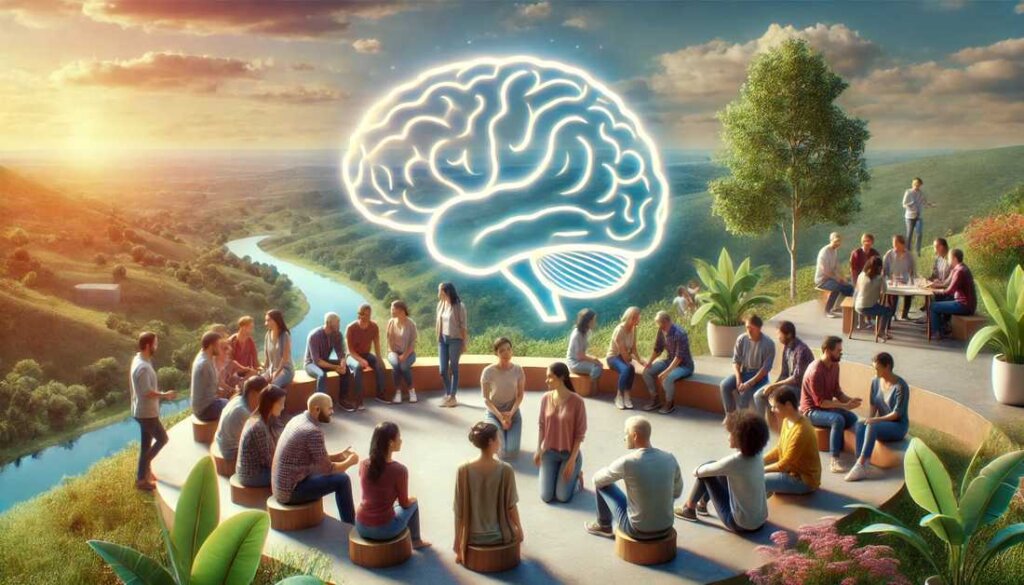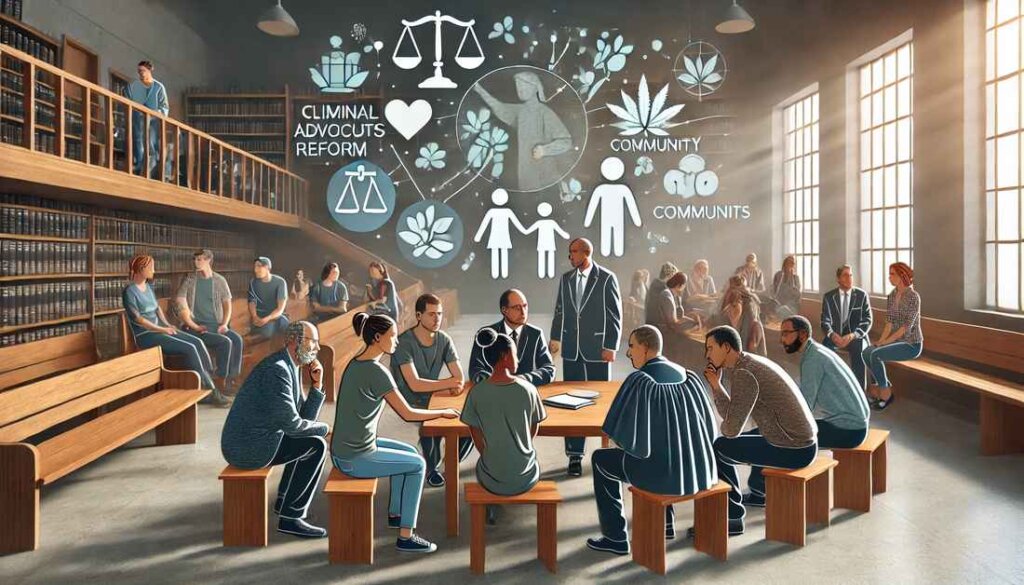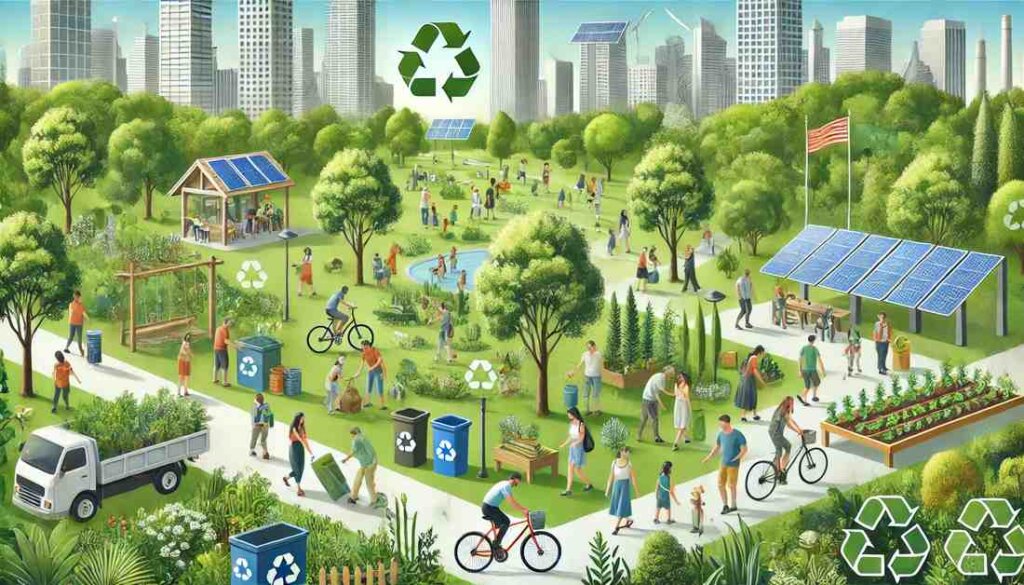In a world that’s always in a hurry, an ancient practice is quietly changing how we live together. Mindfulness & Meditation, the act of being fully present, is making a big impact. It’s not just helping individuals feel better; it’s also transforming many parts of our society in surprising ways.
Improving Mental Health Awareness and Reducing Stigma

More people are talking openly about mental health now. Mindfulness has helped make these conversations normal. By practicing mindfulness, people learn to observe their thoughts without judgment. This makes it easier to discuss feelings and seek help when needed.
Community programs offer mindfulness classes to support mental well-being. For example, mindfulness-based stress reduction programs help people manage anxiety and depression. Schools and workplaces are also adopting mindfulness practices, encouraging open discussions about mental health.
This shift reduces the stigma around mental health issues. People feel more comfortable sharing their experiences. As a result, there’s greater understanding and support within communities.
Scientific Study: Mindfulness practices have been shown to reduce symptoms of depression and anxiety. [Source: Journal of Clinical Psychology]
Revolutionizing Education with Mindful Practices

Schools are bringing mindfulness into classrooms. Teachers lead short breathing exercises to help students focus. Students learn to pay attention to the present moment. This improves concentration and reduces stress.
In some schools, students who practice mindfulness show better grades and behavior. For example, a school in Baltimore introduced mindfulness instead of detention. Students used this time to meditate and reflect, leading to fewer disciplinary issues.
Mindfulness helps students manage their emotions. They become more patient and understanding with each other. This creates a better learning environment for everyone.
Example: A school in California saw reduced bullying after starting a mindfulness program.
Transforming Healthcare with Integrative Approaches

Doctors are adding mindfulness to medical treatments. Patients use mindfulness to cope with pain and illness. This helps them feel calmer and recover faster.
Mindfulness-Based Stress Reduction (MBSR) teaches patients how to handle stress. Studies show that MBSR can improve quality of life for those with chronic conditions. For example, cancer patients practicing mindfulness report less pain and anxiety.
Hospitals are offering mindfulness classes as part of their services. This integrative approach treats the whole person, not just the illness. It supports physical, mental, and emotional healing.
Scientific Study: MBSR has been effective in reducing pain and improving mood.
Redefining Corporate Culture through Mindful Leadership

Companies are adopting mindfulness practices at work. Employees attend meditation sessions to reduce stress. This leads to happier and more productive teams.
Mindful leaders make better decisions and create positive workplaces. They listen carefully and respond thoughtfully. This improves communication and collaboration among staff.
Companies like Google and Intel offer mindfulness programs to their employees. This investment in well-being boosts creativity and job satisfaction. It also reduces burnout and turnover rates.
Example: Google’s “Search Inside Yourself” program helps employees develop emotional intelligence.
Influencing Criminal Justice Reform

Prisons are introducing mindfulness programs to help inmates. Mindfulness teaches them to control anger and make better choices. This can reduce the chances of returning to crime.
For example, the Mindfulness-Based Prison Project offers meditation classes to inmates. Participants report feeling calmer and more in control of their emotions.
Police officers also use mindfulness to handle stress. This helps them stay calm in tough situations and make safer decisions. It can improve interactions with the community and reduce conflicts.
Scientific Study: Mindfulness training for inmates reduced anger and improved behavior.
Enhancing Social Connectivity and Community Building

Mindfulness brings people together. Community centers host meditation groups open to everyone. These gatherings help people feel connected and supported.
By practicing mindfulness, individuals develop empathy and understanding. They listen more deeply to others. This strengthens community bonds and reduces feelings of loneliness.
For example, neighborhood meditation events encourage residents to meet and share experiences. This builds a sense of belonging and improves relationships among neighbors.
Mindfulness can also help resolve conflicts in communities. By promoting patience and open-mindedness, it fosters harmony.
Example: Community mindfulness programs have been linked to increased social cohesion.
Driving Environmental Consciousness and Sustainability

Mindfulness encourages people to care for the environment. By being present, individuals notice the beauty of nature. This leads to more eco-friendly choices.
People may choose to recycle more or reduce waste. They might opt for walking or biking instead of driving. Mindfulness helps us appreciate our planet and take steps to protect it.
Environmental organizations are using mindfulness to promote sustainability. For example, eco-meditations combine mindfulness with nature appreciation. This deepens our connection to the Earth.
Scientific Study: Mindfulness is linked to increased pro-environmental behavior.
Shaping Technology with Ethical Mindfulness

Tech companies are creating tools to promote mindfulness. Apps like Headspace and Calm guide users through meditation. These make mindfulness accessible to many people.
Developers are also designing features to reduce screen time. For example, apps can remind users to take breaks and be present. This helps users balance technology use with real-life interactions.
Some companies focus on “digital well-being.” They aim to create technology that enhances life without causing distraction. This reflects a growing desire for mindful use of devices.
Example: Smartphone settings now include options to limit notifications and encourage breaks.
Promoting Peace and Conflict Resolution

Mindfulness is used to resolve conflicts peacefully. It helps people listen and understand others better. This reduces anger and promotes cooperation.
In some areas, mindfulness programs help communities heal from violence. People learn to respond calmly instead of reacting with aggression. This approach can reduce tensions and build trust.
For example, mindfulness training has been used in conflict zones to promote peace. Participants report better communication and less hostility.
Scientific Study: Mindfulness training can reduce aggression and improve relationships. [Source: Aggression and Violent Behavior]
Redefining Measures of Success and Well-being

People are rethinking what it means to be successful. Instead of just money or status, they value happiness and health. Mindfulness helps individuals find balance and purpose.
Workplaces are encouraging a healthier work-life balance. They offer flexible hours and wellness programs. This shift leads to more satisfied and motivated employees.
Society is starting to measure success by well-being, not just economic growth. Countries like Bhutan use a “Gross National Happiness” index. This reflects a broader understanding of what makes life meaningful.
Example: Companies are measuring success by employee well-being, not just profits.
Conclusion
Mindfulness is transforming our society in many surprising ways. It’s improving mental health awareness and changing how we learn and work. From helping the environment to promoting peace, mindfulness makes a positive difference.
By practicing mindfulness, we can all contribute to these changes. Taking a moment to be present can lead to big impacts. Let’s embrace mindfulness and see how it can transform our world.
To read my other blogs: Click here